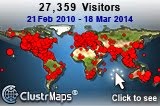I get a daily "great work provocation" email that is supposed to provide a bit of inspiration, challenge, perspective change, etc. Often, they're too obscure for me, and I shrug and delete. Here was today's:
Houdini never found a pair of handcuffs he couldn't escape from.
What are the manacles that are tangling you up?
Time to pick the lock?
What are the manacles that are tangling you up?
Time to pick the lock?
This one resonated. The manacles are that are tangling me up right now are grades. And I have no idea how to pick the lock!
 |
| image credit |
First of all, the lock is on the building- I knew when I took this job that I would be expected to give letter grades. It is a job requirement.
Some reasons that grades are tangling me up like handcuffs-
•Grades don't jive well with my personal philosophy of teaching. I believe in working with students where they are (not where I wish they were). Some students are highly capable, proactive, have tons of family support, etc. They can rock an assignment and need to be challenged to go above and beyond. Those would typically be the "A" students. Other students are disorganized, immature, and struggling. They are not always capable of the same challenges as their peers.
One way I'm trying to address this is by using what my predecessor, Stephanie, used (and taught me) about individualized AR point goals. Each student has a VERY different point goal, and the grade will be dependent upon whether or not the student meets his or her own goals. But that only addresses one small part of the grades conundrum.
•Grades don't provide the most useful feedback. I really related to this teacher, who traded letter grades for narrative feedback and found that it increased students' improvement and motivation. Despite carefully constructed grading scales and carefully worded and shared explanations, grades do often tend to be subjective.
When discussing the move to teacher-led evaluations, I talked to many of my colleagues about the "checklist" part of the evaluation tool vs. the narrative feedback. What I discovered was that teachers were often focused on the checklist, wanting the highest checks (straight As), but didn't really know what it meant in terms of professional development. It was the narrative feedback that was valued and valuable.
•Grades don't motivate the ones who most need motivating. Yes, grades do motivate some kids, kids who might be on the borderline between an A and a B. Maybe they push themselves (or are pushed by their parents) to achieve higher in order to get the A. And I do think that is positive. But what about the ones who could care less? It seems that for some kids, grades may be a de-motivator. What about the kids who, even when they try hard, never get the A?
•Having to give grades makes it tempting to go for the lower levels of Bloom's because those tend to be the easiest to quantify.
I'm doing this with the AR tests. The kids read a book and take a 10 question, multiple-choice test which mostly tests remembering and understanding. It's fine in small quantities, but it's hardly sufficient for meeting grade-level reading standards, let alone the broader goal of preparing students for a future where they need to think critically, create, collaborate, communicate and connect globally.
Many things that I value and know are important activities can not be easily graded. I guess I can give a pass/fail type of grade for participating. But what end does that serve?
•Grades are not authentic. Do you want your blog posts graded? What about your lesson plans? What if you mess up a lesson? Should you get a zero? Does that motivate YOU to be a better teacher? I don't want my posts stamped with an A, B or C, but I do very much want feedback and conversation.
I will work to do my best to quantify learning and use grades to communicate, teach and motivate. But I am highly skeptical that this is the best use of my time as a teacher.
What do you think?






.jpg)




